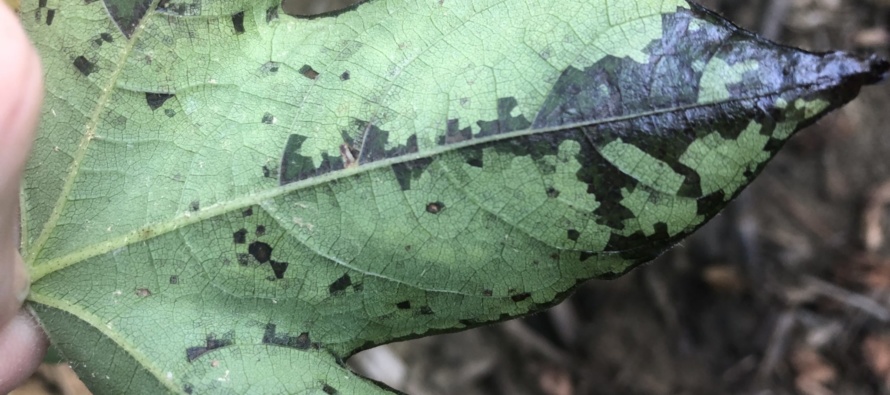A Rapid, Molecular Detection Method for the Cotton Bacterial Blight Organism, Xanthomonas citri pv. malvacearum, from Infected Cotton Plant Material Including Seed

Related Articles
- Rice Variety Trial Results For 2010, Plus Rice Research Report 0
- Evaluation of Peanut Prescription Rx Program in Mississippi 0
- Fertilizing Cotton with Poultry Litter 5
Latest Tweets
By Tom Allen and Shien Lu
Several years ago, following the outbreaks of bacterial blight in 2011 and 2012, a project was initiated to develop a rapid, molecular diagnostic tool to detect the cotton bacterial blight pathogen from cotton plant material including seed. At that time, the most commonly used method to detect the bacterium involved combining multiple laboratory methods that were laborious and required substantial time to complete (weeks to a month) to determine if the organism was present in seed. Sparing the specifics, but bacterial isolations were required from seed and once colonies were selected based on coloration and colony morphology a greenhouse verification method was used to determine if the isolates were in fact pathogenic on cotton. All said, a period of two to four weeks (or more) was generally required to arrive at an answer for something that could be completed much more rapidly with a molecular method. A proposal was drafted by MSU scientists (Shien Lu (the bacteriologist) and Tom Allen) and submitted to Cotton Incorporated for consideration. The main objective of the project was to develop a rapid diagnostic test using molecular technology to speed the process and aid in the ability of detecting the bacterium from planting seed.
One of the additional objectives of the project was to develop a one-page protocol that could be disseminated to seed companies, Land Grant diagnostic laboratories as well as other interested parties. The protocol is attached to this post (BacBlight-qPCR-protocol-FINAL) and can be used by diagnosticians to rapidly identify whether the bacterial blight organism is present in seed. In addition, the protocol could be used to reliably determine if the cotton plant material in question (leaf or seed) is in fact infected by the bacterium.
As a final note, it was the hope of all parties involved that the diagnostic test be produced by a university and freely available to interested parties since check-off dollars supported the project. Even though the Mississippi Crop Situation is likely not the best platform to distribute the protocol, this will serve as a semi-permanent location for the protocol and links can be shared with interested individuals. Moreover, as mentioned above, numerous interested parties inquired about the development of a molecular protocol following the severe bacterial blight outbreaks that occurred in the Mid-south during 2011.
The specific reference and publication associated with the molecular protocol:
Wang, X.-Q., Allen, T. W., Wang, H., Peterson, D., Nichols, R. L., Liu, A., Li, X.-D., Deng, P., Jia, D., and Lu, S.-E. 2018. Development of a qPCR protocol to detect the cotton bacterial blight pathogen, Xanthomonas citri pv. malvacearum, from cotton leaves and seed. Plant Disease (accepted for publication)
https://apsjournals.apsnet.org/doi/pdf/10.1094/PDIS-07-18-1150-RE





Let me tell You a sad story ! There are no comments yet, but You can be first one to comment this article.
Write a comment